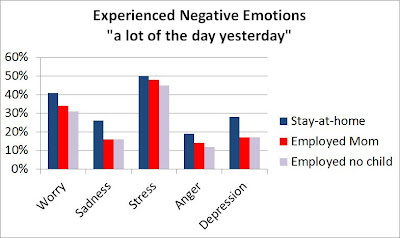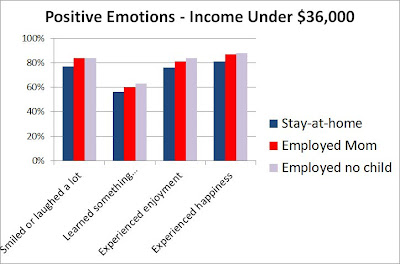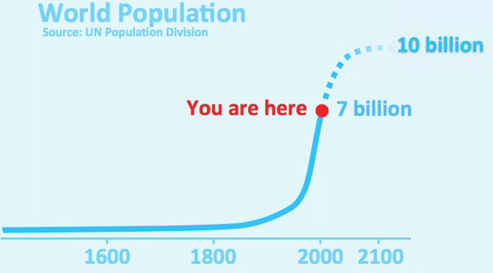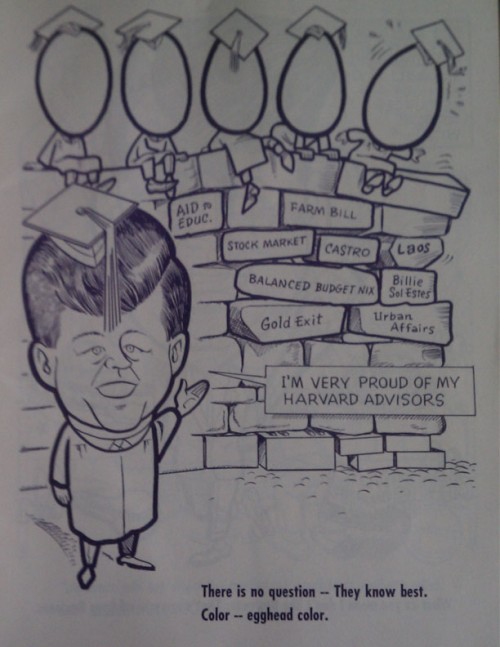In this talk, statistician Hans Rosling looks at whether, globally, religion impacts national fertility rates. His conclusion? Nah, not really. He also points out that while fertility rates are certainly correlated with national income levels, it’s no longer true that a nation must be wealthy before experiencing significant reductions in fertility rates. While all of the nations with fertility rates of 6 or more children per woman are, indeed, quite poor, many similarly poor countries have fertility levels similar to that in much wealthier nations — an average of about 2 children per woman.
Search results for
NPR reports that Beef Products Incorporated, the company that makes “finely textured beef” (a chemically-treated paste made from non-muscle cow parts used as a filler in ground beef), will be closing three of its production plants this month. Dozens of food manufacturers, grocery store chains, restaurants, and school districts have announced they never did or will no longer use the product. This after just two months of media coverage and activism around the product, kicked off by an ABC News report on March 7th.
The swiftness and sureness of this victory against this product is a testament to the value of the right language and one good image. In case you haven’t caught on yet, finely textured beef is better known as “pink slime.” Between that nifty pejorative and images of a long coil of bright pink…substance, which you probably saw, finely textured beef never had a chance. This is “mechanically separated chicken” (made with a similar but not identical process); it appears to have become synonymous with pink slime, correctly or no.
This is the power of framing. The product at issue is not “slime,” it’s cow-part paste. Of course, it’s not “beef” either, it’s cow-part paste. Both are discursive frames; it’s a classic “he said, she said” social movement framing battle (along the lines of “life” vs. “choice”). The outcome of the contest depended, in part, on which language captured the public’s imagination. And… well… we saw how that went.
Lisa Wade, PhD is an Associate Professor at Tulane University. She is the author of American Hookup, a book about college sexual culture; a textbook about gender; and a forthcoming introductory text: Terrible Magnificent Sociology. You can follow her on Twitter and Instagram.
Recently Talking Points Memo posted a 1960s coloring book sent in by a reader, who found it among her grandmother’s things. The coloring book, New Frontier, mocks John F. Kennedy and a number of his policies.
What’s fascinating is how closely some of the arguments in it match rhetoric in the presidential debate today. There’s concern that the President’s programs — in this case, Medicare — will negatively affect the quality of medical care, inserting the federal government between patients and doctors:
And an association with Harvard advisors was worthy of scorn then, too:
Another accuses Kennedy of attacking business at the expense of dealing competently with external national security threats:
It’s an interesting reminder that many of the attacks we see against President Obama today aren’t new; there’s the newest round in an ongoing struggle about social policies and political priorities.
The splashy introduction of the new LEGO friends line earlier this year stirred up a lot of controversy. My goal with this set of posts is to provide some historical perspective for the valid concerns raised in this heated debate.
This is Part III, see also:
—————————
2004-2011: Lean LEGO Fighting Machine
As discussed in Part II, between 1989 and 2003, LEGO had introduced a stream of lines aimed specifically at girls. None were particularly successful and the company was in trouble. So, what next?
Those of us who follow every move TLG makes are well familiar with the company’s near collapse in 2004 and subsequent renaissance. This is a really important moment for our story, because this is the year when TLG stopped being a family run business and brought in a non-Kristiansen CEO, Jorgen Vig Knudstorp. With Knudstorp’s arrival came a change in philosophy. Quoted from the DailyMail article linked above:
Instead of “nurturing the child” – as Knudstorp puts it – [employees’] primary goal now had to be, “I am here to make money for the company.”
I, like many LEGO fans, am very grateful for what Knudstorp did to save and revitalize the company. The post-2004 era has seen a flourishing of LEGO themes and sets aimed at advanced builders. The LEGO minifig has been injected with more personality and variety than ever before. However, part of TLG’s new strategy also involved abandoning efforts the girl market and focusing exclusively on boys.
Abandoning schlock like Belville and Clikits is not a bad thing, but the push toward conflict and hyper-masculinity in classic themes (and a whole host of new ones) made LEGOLAND inhospitable for femininity. Here are a couple more telling quotes from the Daily Mail article:
As always with Lego, this [action-oriented theme] was developed at every stage… with the help of focus groups, mostly comprising boys aged between six and 12.
In this new world focused on profit, the company sees no shame in admitting that, like it or not, what most excites little boys is conflict.
Which is to say, LEGO City is not the tranquil place LEGO Town was.
Notice the substantial hike in the m/f ratio in 2007. This ratio had been gradually approaching 1 throughout the 90s, but jumped back up to 1992 levels in 2007 (male/female ratio = 8).
Girls also disappeared from LEGO commercials and marketing collateral. LEGO produced a series of commercials encouraging fathers and sons to build together; the utter lack of anything similar for girls sends a clear message about who is expected to play with LEGO, it has entirely entered the masculine domain. With girls being actively excluded from TLG’s marketing efforts it’s no surprise that we see such a low percentage playing with them now.
In the final installment of this series, I’ll offer my perspective on the controversy over the new line aimed at girls, LEGO Friends.
—————————
David Pickett is a social media marketer by day and a LEGO animator by night. He is fanatical about LEGO and proud to be a nerd. Read more from David at Thinking Brickly.
Lisa Wade, PhD is an Associate Professor at Tulane University. She is the author of American Hookup, a book about college sexual culture; a textbook about gender; and a forthcoming introductory text: Terrible Magnificent Sociology. You can follow her on Twitter and Instagram.
Cross-posted at Montclair SocioBlog.
The politics of motherhood reared its head again last month when Hilary Rosen, who the news identified as a “Democratic strategist,” said that Ann Romney (Mrs. Mitt) had “never worked a day in her life.” (A NY Times article is here.)
“Worked” was a bad choice of words. Raising kids and taking care of a home are work, maybe even if you can hire the kind of help that Mrs. Romney could afford. Rosen’s comment implied that family work is not as worthwhile as work in the paid labor force. That’s not such an unreasonable conclusion if you assume that we put our money where our values are and reward work in proportion to what we think it’s worth. Mitt’s supporters use this value-to-society assumption to justify the huge payoffs Romney derived from those leveraged buyouts at Bain Capital.*
Even Mrs. Romney apparently felt that there must be some truth to the enviability of a career. Why else would she refer to stay-at-home motherhood as a career? “My career choice was to be a mother.”
Still, regardless of the truth of Rosen’s remark, it was insulting.** Stay-at-home motherhood is work – a job.
But is it a good job?
A recent Gallup poll provides some more evidence as to why stay-at-home moms might be both envious or resentful of their employed counterparts. Gallup asked women about the emotions, positive and negative, that they had felt “a lot” in the previous day. Gallup then compared the stay-at-home moms, employed moms, and employed women who had no children at home.

The stay-at-home moms came in first on every negative emotion. Some of the differences are small, but the Gallup sample was more than 60,000 so these differences are statistically significant. The smallest difference was for Stress – no surprise there, since paid work can be stressful. Worry and Anger too can be part of the workplace. The largest differences were for Sadness and Depression. Stay-home moms were 60% more likely to have been sad or depressed.
Gallup also asked about positive feelings (Thriving, Smiling or Laughing, Learning, Happiness, Enjoyment), and while the differences were smaller, they went the same way, with stay-at-home moms on the shorter end. Still it’s encouraging that 86% of them had Experienced Happiness 86%; so had 91% of the employed moms.
Money matters. As Rosen said,
This isn’t about whether Ann Romney or I or other women of some means can afford to make a choice to stay home and raise kids. Most women in America, let’s face it, don’t have that choice.
Gallup found a small interaction effect. The stay-at-home mom-employed difference was greater for low-income women.

The Gallup poll does not offer much speculation about why stay-at-home moms have more sadness and less happiness. One in four experienced “a lot” of depression yesterday. That number should be cause for concern.
Maybe women feel more uncertain and less able to control their lives when they depend on a man, especially one whose income is inadequate. Maybe stay-at-home moms find themselves more isolated from other adults. Maybe they are at home not by choice but because they cannot find a decent-paying job. Or maybe money talks, and what it says to unpaid stay-at-home moms is society does not value your work. Nor, in comparison with other wealthy countries, does US society or government provide much non-financial support to make motherhood easier.
The late Donna Summer sang,
She works hard for the money
So you better treat her right
But how right are we treating women who work hard for no money?
——————————-
* For example, Edward Conrad is a former partner of Romney. In a recent article in the Times Magazine, Adam Davidson writes, “If a Wall Street trader or a corporate chief executive is filthy rich, Conrad says that the merciless process of economic selection has assured that they have somehow benefitted society.”
** Hillary Clinton committed a similar gaffe twenty years ago in response to a reporter’s question about work and family “I suppose I could have stayed home and baked cookies and had teas, but what I decided to do was to fulfill my profession which I entered before my husband was in public life”
Today I thought we’d do another round-up of gendered children’s stuff, since we’ve gotten a number of submissions. So here we go.
Missy C. noticed that the manufacturer’s product description listed on Amazon for one of the Fisher Price Imaginext Sky Racers took for granted that the toy was for boys, not, say, “kids”:
Monica C., meanwhile, noticed another example of the association of girls with a diva-ish princess center-of-attention persona when looking at onesies for sale at My Habit. Options included “born fabulous,” “high maintenance,” “born to wear diamonds,” and “it’s all about me,” among others:
Similarly, Melanie J. saw some baby booties for sale at retail chain JR’s in North Carolina that reinforce the idea that boys are mischievous while girls are materialistic:
You can buy them gendered vitamins as well. Nathan, who writes at 1115, sent in this photo he took at Target:
Pete & Emily in Norwich, UK, noticed that you can now allow your hamsters to inhabit gendered worlds too, if you’d like; they sent us this photo they took at a pet store:
But we do have two counter-examples this time! Jackie H. took a photo of a kitchen set she saw for sale at Meijer, which shows both a boy and a girl using it:
And Isabeau P.S., Jesse W., and Anne Sofie B. all sent in images from the catalog for Swedish toy maker Leklust (two of the images were discussed at Mommyish):
You’ve probably heard someone in media or politics bemoan the ballooning student debt in the U.S. In fact, debt has been rising. It’s more than doubled in the last ten years (that’s a more than 100% increase):
This debt, though, can’t be attributed primarily to the rising cost of education, as Planet Money explains. The average debt load for a student graduating from a public school, for example, has risen by 20%:
The average debt load for a student coming out of a private school has gone up a bit more, but still not enough to account for the leap in overall student debt.
The increase in debt, it turns out, is largely accounted for by an increase in the number of people going to college. In 1970, 8,500 8,500,000 people enrolled in college in the Fall; in 2009, that number exceeded 20,000 20,000,000 (source). A more than 100% increase.
So, the story isn’t quite as dire as we might think. This may be little consolation, though, for my students who walked across the stage yesterday. Congrats, Seniors! :)
Lisa Wade, PhD is an Associate Professor at Tulane University. She is the author of American Hookup, a book about college sexual culture; a textbook about gender; and a forthcoming introductory text: Terrible Magnificent Sociology. You can follow her on Twitter and Instagram.
Last week, the Census Bureau announced that as of July 1, 2011, for the first time the majority (50.4%) of babies under age 1 in the U.S. were not non-Hispanic Whites. Animal New York posted a video by Jay Smooth discussing the reactions to and implications of this news:
You can see the NYT article Jay Smooth parodies here, but note that the graph is mislabeled. The line labeled “White” actually only represents the data for non-Hispanic Whites, while the line labeled “Non-White” includes births to White Hispanics, so the terminology they used doesn’t accurately reflect what the graph illustrates.
NPR reports that Beef Products Incorporated, the company that makes “finely textured beef” (a chemically-treated paste made from non-muscle cow parts used as a filler in ground beef), will be closing three of its production plants this month. Dozens of food manufacturers, grocery store chains, restaurants, and school districts have announced they never did or will no longer use the product. This after just two months of media coverage and activism around the product, kicked off by an ABC News report on March 7th.
The swiftness and sureness of this victory against this product is a testament to the value of the right language and one good image. In case you haven’t caught on yet, finely textured beef is better known as “pink slime.” Between that nifty pejorative and images of a long coil of bright pink…substance, which you probably saw, finely textured beef never had a chance. This is “mechanically separated chicken” (made with a similar but not identical process); it appears to have become synonymous with pink slime, correctly or no.
This is the power of framing. The product at issue is not “slime,” it’s cow-part paste. Of course, it’s not “beef” either, it’s cow-part paste. Both are discursive frames; it’s a classic “he said, she said” social movement framing battle (along the lines of “life” vs. “choice”). The outcome of the contest depended, in part, on which language captured the public’s imagination. And… well… we saw how that went.
Lisa Wade, PhD is an Associate Professor at Tulane University. She is the author of American Hookup, a book about college sexual culture; a textbook about gender; and a forthcoming introductory text: Terrible Magnificent Sociology. You can follow her on Twitter and Instagram.
Recently Talking Points Memo posted a 1960s coloring book sent in by a reader, who found it among her grandmother’s things. The coloring book, New Frontier, mocks John F. Kennedy and a number of his policies.
What’s fascinating is how closely some of the arguments in it match rhetoric in the presidential debate today. There’s concern that the President’s programs — in this case, Medicare — will negatively affect the quality of medical care, inserting the federal government between patients and doctors:
And an association with Harvard advisors was worthy of scorn then, too:
Another accuses Kennedy of attacking business at the expense of dealing competently with external national security threats:
It’s an interesting reminder that many of the attacks we see against President Obama today aren’t new; there’s the newest round in an ongoing struggle about social policies and political priorities.
The splashy introduction of the new LEGO friends line earlier this year stirred up a lot of controversy. My goal with this set of posts is to provide some historical perspective for the valid concerns raised in this heated debate.
This is Part III, see also:
—————————
2004-2011: Lean LEGO Fighting Machine
As discussed in Part II, between 1989 and 2003, LEGO had introduced a stream of lines aimed specifically at girls. None were particularly successful and the company was in trouble. So, what next?
Those of us who follow every move TLG makes are well familiar with the company’s near collapse in 2004 and subsequent renaissance. This is a really important moment for our story, because this is the year when TLG stopped being a family run business and brought in a non-Kristiansen CEO, Jorgen Vig Knudstorp. With Knudstorp’s arrival came a change in philosophy. Quoted from the DailyMail article linked above:
Instead of “nurturing the child” – as Knudstorp puts it – [employees’] primary goal now had to be, “I am here to make money for the company.”
I, like many LEGO fans, am very grateful for what Knudstorp did to save and revitalize the company. The post-2004 era has seen a flourishing of LEGO themes and sets aimed at advanced builders. The LEGO minifig has been injected with more personality and variety than ever before. However, part of TLG’s new strategy also involved abandoning efforts the girl market and focusing exclusively on boys.
Abandoning schlock like Belville and Clikits is not a bad thing, but the push toward conflict and hyper-masculinity in classic themes (and a whole host of new ones) made LEGOLAND inhospitable for femininity. Here are a couple more telling quotes from the Daily Mail article:
As always with Lego, this [action-oriented theme] was developed at every stage… with the help of focus groups, mostly comprising boys aged between six and 12.
In this new world focused on profit, the company sees no shame in admitting that, like it or not, what most excites little boys is conflict.
Which is to say, LEGO City is not the tranquil place LEGO Town was.
Notice the substantial hike in the m/f ratio in 2007. This ratio had been gradually approaching 1 throughout the 90s, but jumped back up to 1992 levels in 2007 (male/female ratio = 8).
Girls also disappeared from LEGO commercials and marketing collateral. LEGO produced a series of commercials encouraging fathers and sons to build together; the utter lack of anything similar for girls sends a clear message about who is expected to play with LEGO, it has entirely entered the masculine domain. With girls being actively excluded from TLG’s marketing efforts it’s no surprise that we see such a low percentage playing with them now.
In the final installment of this series, I’ll offer my perspective on the controversy over the new line aimed at girls, LEGO Friends.
—————————
David Pickett is a social media marketer by day and a LEGO animator by night. He is fanatical about LEGO and proud to be a nerd. Read more from David at Thinking Brickly.
Lisa Wade, PhD is an Associate Professor at Tulane University. She is the author of American Hookup, a book about college sexual culture; a textbook about gender; and a forthcoming introductory text: Terrible Magnificent Sociology. You can follow her on Twitter and Instagram.
Cross-posted at Montclair SocioBlog.
The politics of motherhood reared its head again last month when Hilary Rosen, who the news identified as a “Democratic strategist,” said that Ann Romney (Mrs. Mitt) had “never worked a day in her life.” (A NY Times article is here.)
“Worked” was a bad choice of words. Raising kids and taking care of a home are work, maybe even if you can hire the kind of help that Mrs. Romney could afford. Rosen’s comment implied that family work is not as worthwhile as work in the paid labor force. That’s not such an unreasonable conclusion if you assume that we put our money where our values are and reward work in proportion to what we think it’s worth. Mitt’s supporters use this value-to-society assumption to justify the huge payoffs Romney derived from those leveraged buyouts at Bain Capital.*
Even Mrs. Romney apparently felt that there must be some truth to the enviability of a career. Why else would she refer to stay-at-home motherhood as a career? “My career choice was to be a mother.”
Still, regardless of the truth of Rosen’s remark, it was insulting.** Stay-at-home motherhood is work – a job.
But is it a good job?
A recent Gallup poll provides some more evidence as to why stay-at-home moms might be both envious or resentful of their employed counterparts. Gallup asked women about the emotions, positive and negative, that they had felt “a lot” in the previous day. Gallup then compared the stay-at-home moms, employed moms, and employed women who had no children at home.

The stay-at-home moms came in first on every negative emotion. Some of the differences are small, but the Gallup sample was more than 60,000 so these differences are statistically significant. The smallest difference was for Stress – no surprise there, since paid work can be stressful. Worry and Anger too can be part of the workplace. The largest differences were for Sadness and Depression. Stay-home moms were 60% more likely to have been sad or depressed.
Gallup also asked about positive feelings (Thriving, Smiling or Laughing, Learning, Happiness, Enjoyment), and while the differences were smaller, they went the same way, with stay-at-home moms on the shorter end. Still it’s encouraging that 86% of them had Experienced Happiness 86%; so had 91% of the employed moms.
Money matters. As Rosen said,
This isn’t about whether Ann Romney or I or other women of some means can afford to make a choice to stay home and raise kids. Most women in America, let’s face it, don’t have that choice.
Gallup found a small interaction effect. The stay-at-home mom-employed difference was greater for low-income women.

The Gallup poll does not offer much speculation about why stay-at-home moms have more sadness and less happiness. One in four experienced “a lot” of depression yesterday. That number should be cause for concern.
Maybe women feel more uncertain and less able to control their lives when they depend on a man, especially one whose income is inadequate. Maybe stay-at-home moms find themselves more isolated from other adults. Maybe they are at home not by choice but because they cannot find a decent-paying job. Or maybe money talks, and what it says to unpaid stay-at-home moms is society does not value your work. Nor, in comparison with other wealthy countries, does US society or government provide much non-financial support to make motherhood easier.
The late Donna Summer sang,
She works hard for the money
So you better treat her right
But how right are we treating women who work hard for no money?
——————————-
* For example, Edward Conrad is a former partner of Romney. In a recent article in the Times Magazine, Adam Davidson writes, “If a Wall Street trader or a corporate chief executive is filthy rich, Conrad says that the merciless process of economic selection has assured that they have somehow benefitted society.”
** Hillary Clinton committed a similar gaffe twenty years ago in response to a reporter’s question about work and family “I suppose I could have stayed home and baked cookies and had teas, but what I decided to do was to fulfill my profession which I entered before my husband was in public life”
Today I thought we’d do another round-up of gendered children’s stuff, since we’ve gotten a number of submissions. So here we go.
Missy C. noticed that the manufacturer’s product description listed on Amazon for one of the Fisher Price Imaginext Sky Racers took for granted that the toy was for boys, not, say, “kids”:
Monica C., meanwhile, noticed another example of the association of girls with a diva-ish princess center-of-attention persona when looking at onesies for sale at My Habit. Options included “born fabulous,” “high maintenance,” “born to wear diamonds,” and “it’s all about me,” among others:
Similarly, Melanie J. saw some baby booties for sale at retail chain JR’s in North Carolina that reinforce the idea that boys are mischievous while girls are materialistic:
You can buy them gendered vitamins as well. Nathan, who writes at 1115, sent in this photo he took at Target:
Pete & Emily in Norwich, UK, noticed that you can now allow your hamsters to inhabit gendered worlds too, if you’d like; they sent us this photo they took at a pet store:
But we do have two counter-examples this time! Jackie H. took a photo of a kitchen set she saw for sale at Meijer, which shows both a boy and a girl using it:
And Isabeau P.S., Jesse W., and Anne Sofie B. all sent in images from the catalog for Swedish toy maker Leklust (two of the images were discussed at Mommyish):
You’ve probably heard someone in media or politics bemoan the ballooning student debt in the U.S. In fact, debt has been rising. It’s more than doubled in the last ten years (that’s a more than 100% increase):
This debt, though, can’t be attributed primarily to the rising cost of education, as Planet Money explains. The average debt load for a student graduating from a public school, for example, has risen by 20%:
The average debt load for a student coming out of a private school has gone up a bit more, but still not enough to account for the leap in overall student debt.
The increase in debt, it turns out, is largely accounted for by an increase in the number of people going to college. In 1970, 8,500 8,500,000 people enrolled in college in the Fall; in 2009, that number exceeded 20,000 20,000,000 (source). A more than 100% increase.
So, the story isn’t quite as dire as we might think. This may be little consolation, though, for my students who walked across the stage yesterday. Congrats, Seniors! :)
Lisa Wade, PhD is an Associate Professor at Tulane University. She is the author of American Hookup, a book about college sexual culture; a textbook about gender; and a forthcoming introductory text: Terrible Magnificent Sociology. You can follow her on Twitter and Instagram.
Last week, the Census Bureau announced that as of July 1, 2011, for the first time the majority (50.4%) of babies under age 1 in the U.S. were not non-Hispanic Whites. Animal New York posted a video by Jay Smooth discussing the reactions to and implications of this news:
You can see the NYT article Jay Smooth parodies here, but note that the graph is mislabeled. The line labeled “White” actually only represents the data for non-Hispanic Whites, while the line labeled “Non-White” includes births to White Hispanics, so the terminology they used doesn’t accurately reflect what the graph illustrates.
















